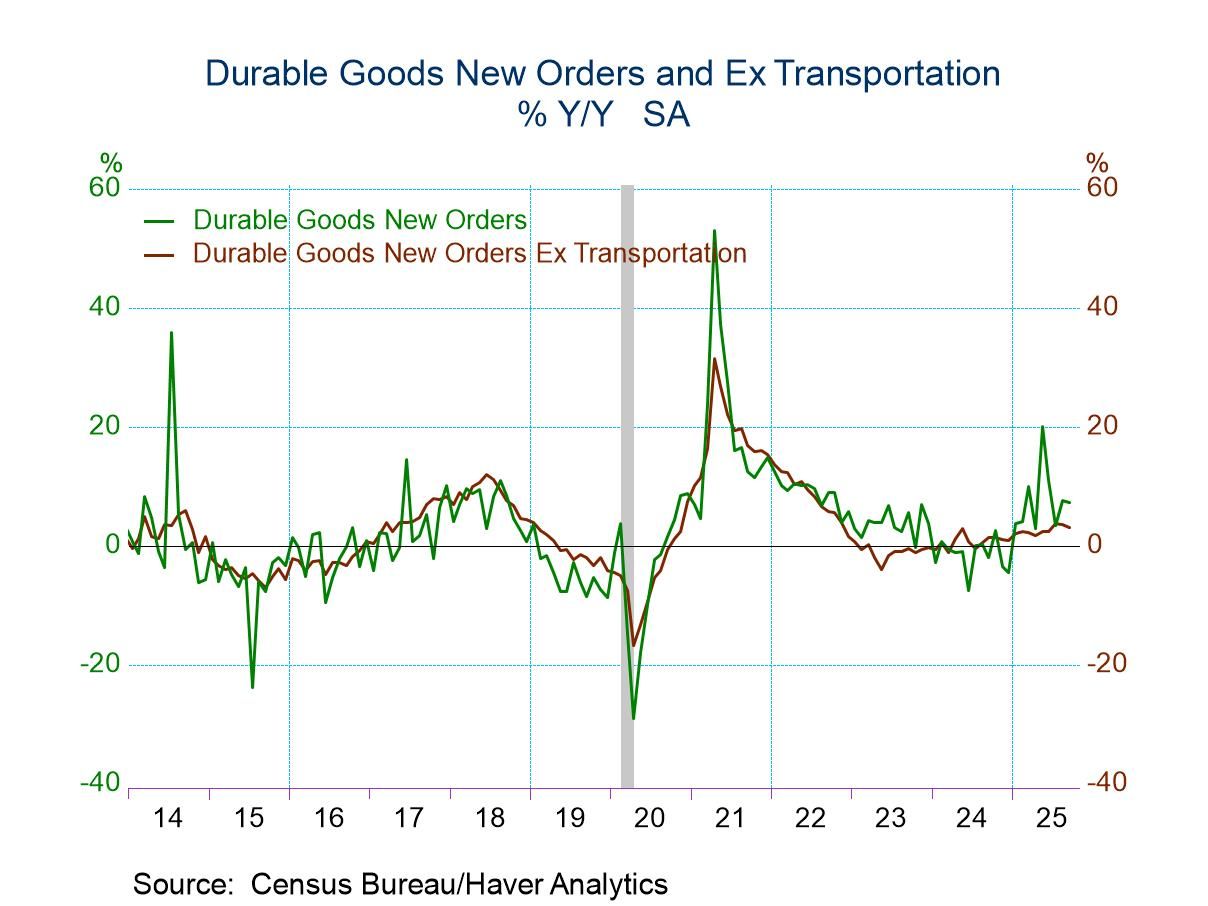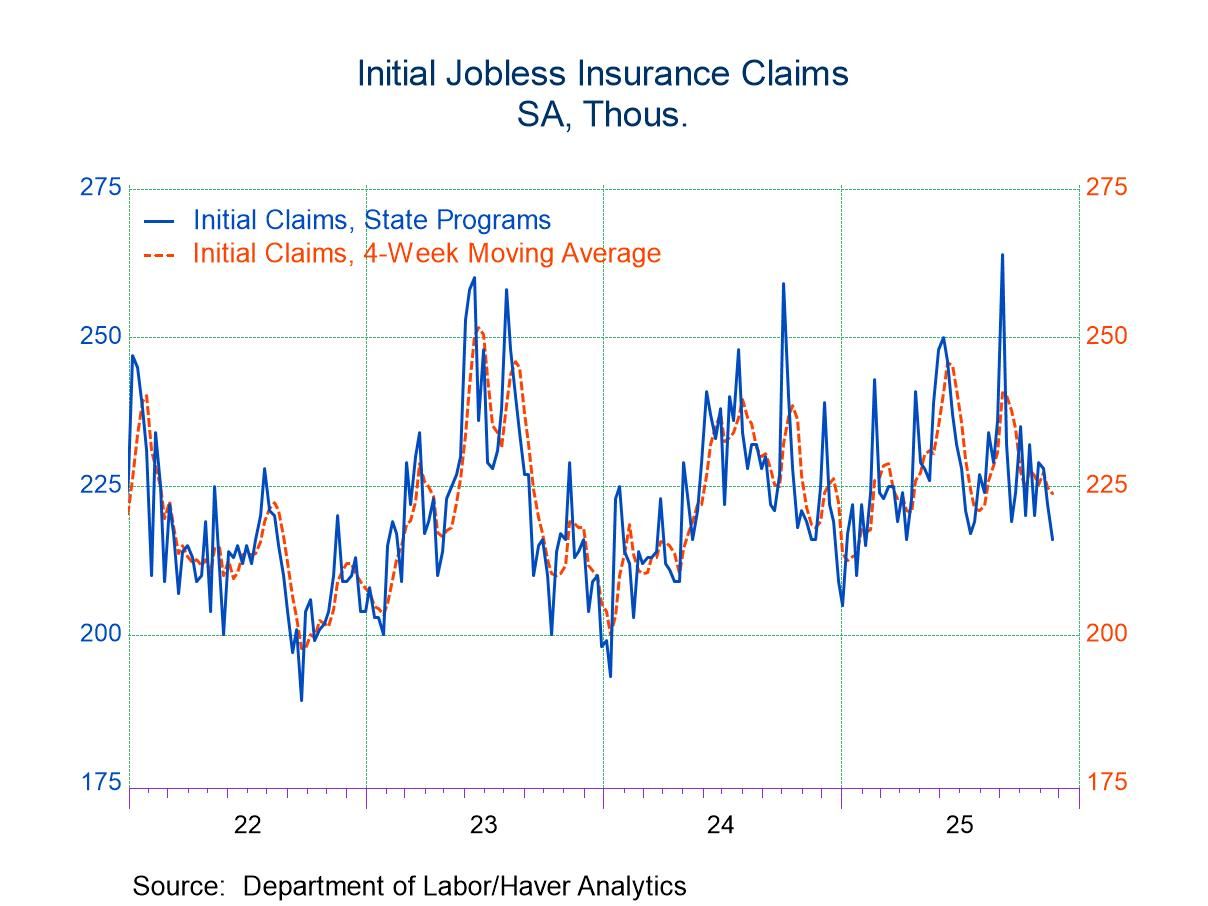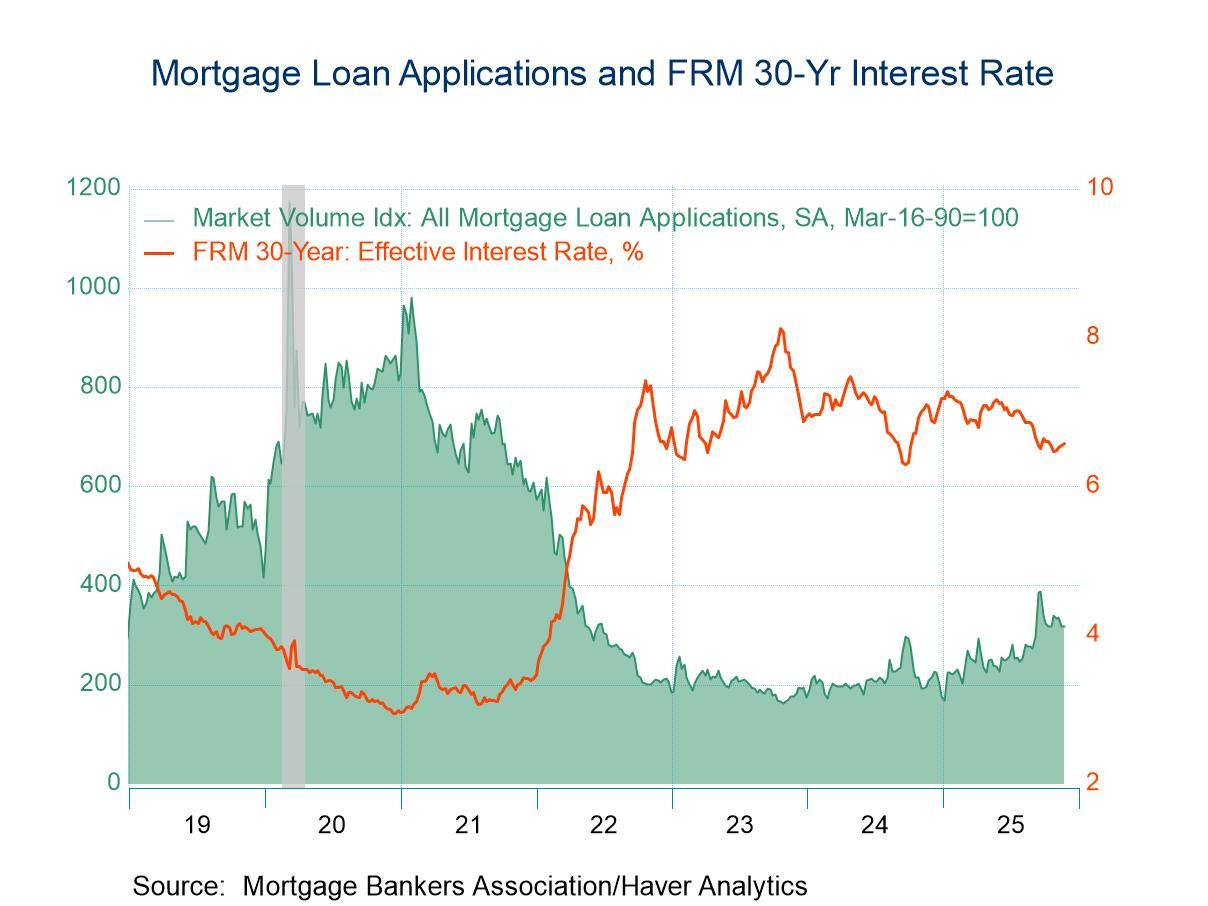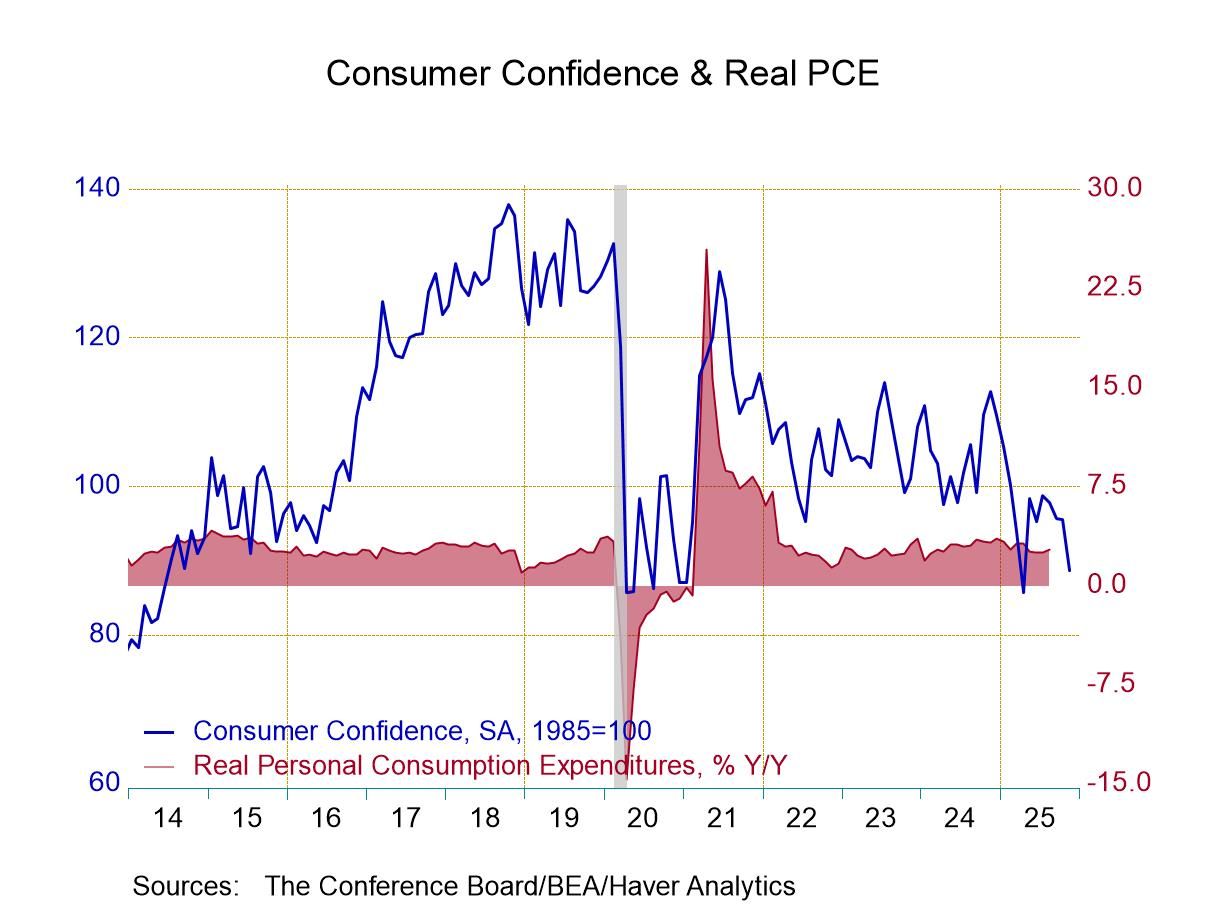U.S. ISM Manufacturing PMI Declines Further in May; Price Index Eases
by:Tom Moeller
|in:Economy in Brief
Summary
- Index weakens to lowest point in three months.
- Orders & production decline but employment strengthens.
- Price index moderates after earlier strength.


The ISM Purchasing Managers Index of activity in the manufacturing sector fell to 48.7 during May after declining to 49.2 in April and 50.3 in March, according to the Institute for Supply Management. Remaining below 50, the index indicates a contraction in U.S. manufacturing sector activity, but the reading remained up from a low of 46.4 in June of last year. The index peaked at 64.0 in March 2021. A reading of 49.6 for last month had been expected in the Action Economics Forecast Survey.
Movement amongst the index components was mixed in May. Leading the downturn, the new orders series declined to 45.4 from 49.1 in April. It was the lowest point in twelve months as 19.0% (NSA) of respondents reported higher orders and 23.6% reported a decline. The production index fell to 50.2 last month after easing to 51.3 in April. Twenty percent (NSA) of survey participants reported increased production while 17.6% reported declines. The inventories index eased to 47.9 in May from 48.2 in April, though it remained above an October low of 43.6. Fourteen percent (NSA) of survey participants reported higher inventories while 19.2% reported a decline. The supplier deliveries index held steady at 48.9 but was increased from 43.5 twelve months earlier. Six percent of respondents (NSA) reported slower delivery speeds while 8.5% reported them quicker.
Moving higher, the employment index jumped to 51.1 in May from 48.6 in April. It was the highest level since August 2022 and up from a low of 45.9 three months earlier. Seventeen percent (NSA) of respondents reported higher employment while 13.9% indicated a decline.
The prices index weakened to 57.0 (NSA) last month from 60.9 in Apri. It remained up from a low of 39.4 in December 2022. The index peaked at 92.1 in June 2021 and averaged 46.6 last year. Twenty-six percent of respondents reported higher prices last month while 11.5% reported price declines.
In other series, the export order index rose to 50.6 from 48.7 in April. It was increased from the January 2024 low of 45.2. Ten percent (NSA) of respondents reported higher exports while 8.9% reported declines. The imports series fell to 51.1 from 51.9, but both were increased from a low of 45.1 in December 2022. The order backlog index fell to 42.4 (NSA) last month from 45.4 in April, both still above a low of 37.5 in May of last year.
The ISM figures are based on responses from over 400 purchasing executives from 20 industries, which correspond to their contribution to GDP in 50 states. These data are diffusion indexes where a reading above 50 indicates expansion. The figures from the Institute for Supply Management can be found in Haver's USECON database; further detail is found in the SURVEYS database. The expectations number is available in Haver's AS1REPNA database.


Tom Moeller
AuthorMore in Author Profile »Prior to joining Haver Analytics in 2000, Mr. Moeller worked as the Economist at Chancellor Capital Management from 1985 to 1999. There, he developed comprehensive economic forecasts and interpreted economic data for equity and fixed income portfolio managers. Also at Chancellor, Mr. Moeller worked as an equity analyst and was responsible for researching and rating companies in the economically sensitive automobile and housing industries for investment in Chancellor’s equity portfolio. Prior to joining Chancellor, Mr. Moeller was an Economist at Citibank from 1979 to 1984. He also analyzed pricing behavior in the metals industry for the Council on Wage and Price Stability in Washington, D.C. In 1999, Mr. Moeller received the award for most accurate forecast from the Forecasters' Club of New York. From 1990 to 1992 he was President of the New York Association for Business Economists. Mr. Moeller earned an M.B.A. in Finance from Fordham University, where he graduated in 1987. He holds a Bachelor of Arts in Economics from George Washington University.






